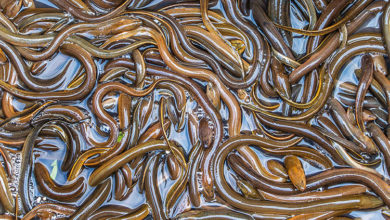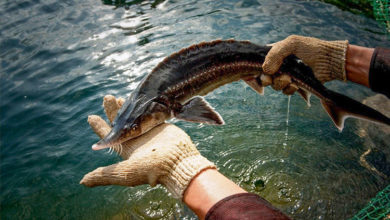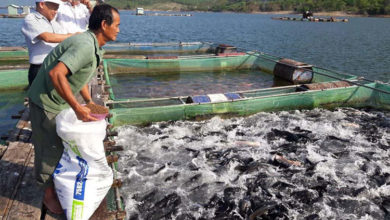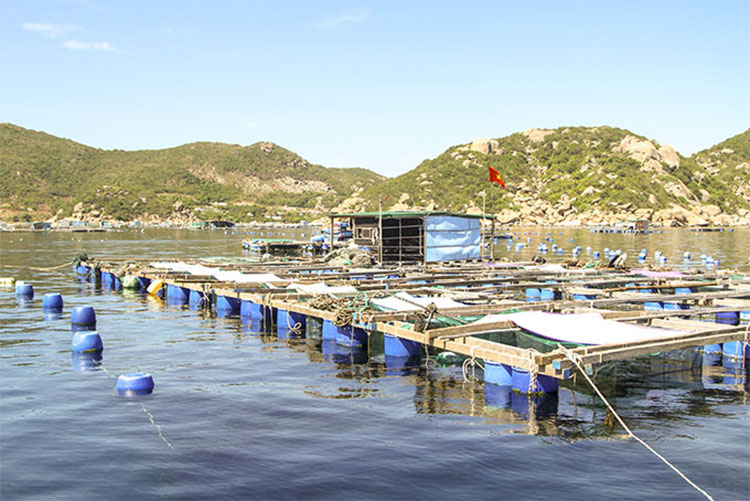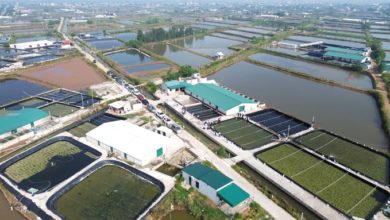Lao Cai: Specialty fish Bỗng breeding brings high income to mountainous farmers
Local fish, called Bỗng or denti carp, primarily lives in the wild. However, farmers in the northern mountainous province of Lao Cai have succeeded in breeding Bỗng artificially.
A decade of perseverance in breeding Bỗng
Bỗng, a specialty fish from the mountainous province of Lao Cai, mostly lives in the wild, in clean, high-gradient rivers and streams. In the past, during the spawning season, people would follow the rivers and streams to collect eggs and young fish for farming. However, most people lacked experience and technical knowledge, so the fish grew slowly and often died. Meanwhile, the price of Bỗng can reach 500,000-700,000 VND per kilogram.
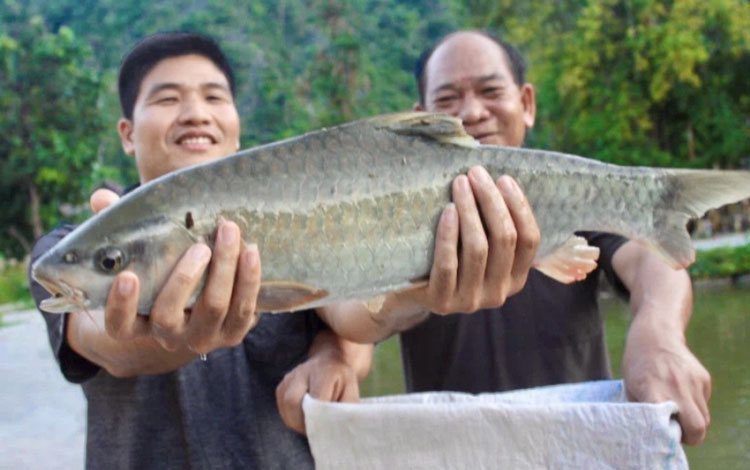
Seeing the economic benefits of farming Bỗng, Hoang Thi Chap from Luong Do village, Coc San commune (Lao Cai city) initiated breeding them for commercial purposes in 2007. During a trip to Than Uyen (Lai Chau), she bought 10 Bỗng fish caught from a stream to raise, but unfortunately, she did not succeed. The entire fish flock died after a heavy rainstorm.
When she heard the news from Ha Giang and other regions where people were experimenting with raising this type of fish, she went there to learn and buy fish to raise. After nearly 10 years, with the government’s support to join traning aquaculture course, Chap succeeded in artificial fish breeding in her ponds.
In Lao Cai, Bỗng mainly lives along the Chay River and is a specialty of the ethnic minorities in the mountainous areas. This fish is very delicious but hard to catch and difficult to breed. During the spawning season, people often use thick nets to catch Bỗng eggs. When the eggs hatch into young fish, they are sold to households for farming. However, my family can now artificially breed Bỗng fish successfully,” said Chap.
Currently, Chắp maintains about 120 pairs of broodstock. Each year, these pairs produce around 10,000 fry. The sale of fry alone brings her family an annual income of about 100 million VND.
“Bỗng only spawns once a year, unlike the carp which spawns twice a year. It requires a lot of oxygen, so it cannot be raised at high densities. This fish also cannot be sold in the market because of its high price; it is only supplied to restaurants. However, in the long term, the profits from raising Bỗng will be very significant,” said Chap.
Sharing fish farming experience to end poverty
“Since 2004, I started by raising 500 parent carps, with an average weight of about 1kg each. After one year, the fish grew quickly and had beautiful colors, so I decided to breed them for fingerlings. My family encouraged people around to raise fish themselves, with each famr stocking a few thousand fish, and the initial results were promising,” said Chap.
By 2015, she requested the local authorities to convert the low-yield rice fields into fish ponds. After breeding and selling fish fry, traders came to buy from her, and word spread. People from neighboring communes and districts came to her family to buy fingerlings. Currently, her family produces about one million fingerlings annually, including carp, grass carp, tilapia, and other species.
From the techniques acquired, she shares and passes on the knowledge to the community so that everyone can raise fish successfully. “For any family in difficulty, I provide feed, fingerlings, and even help dig ponds. When harvesting, they will repay me later,” said Chap. She is currently producing commercial fish and fries to serve the provinces of Lao Cai, Lai Chau, Dien Bien, Yen Bai, and provides employment for 6-8 local workers.
After many years, Coc San commune has become a freshwater fish hub, supplying Lao Cai city and neighboring provinces. According to Mr. Luc Van Hoan, Vice Chairman of the People’s Committee of Coc San commune (Lao Cai city), Coc San currently has 40.8 hectares of aquaculture area. With this area, Coc San is achieving excellent results, providing a stable income for the local people. On average, each hectare of water surface can yield 15 tons of fish, with an estimated revenue of about 600 million VND per hectare.


